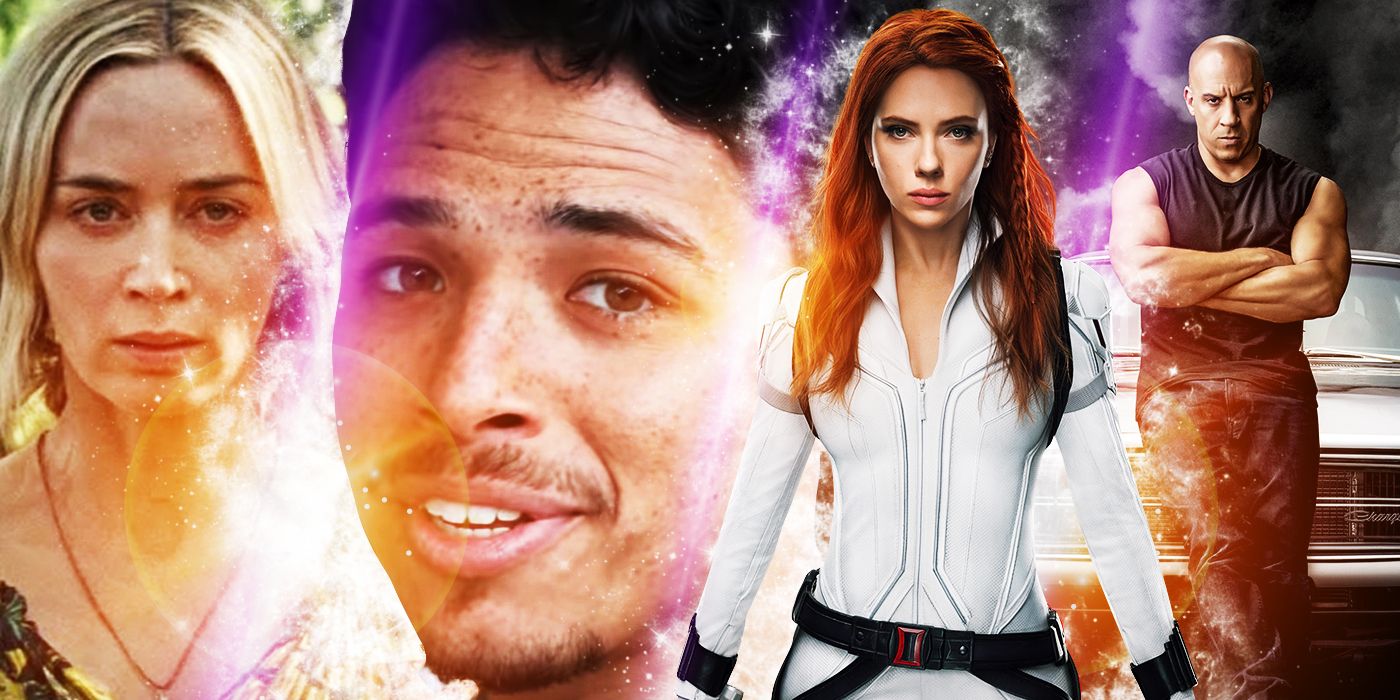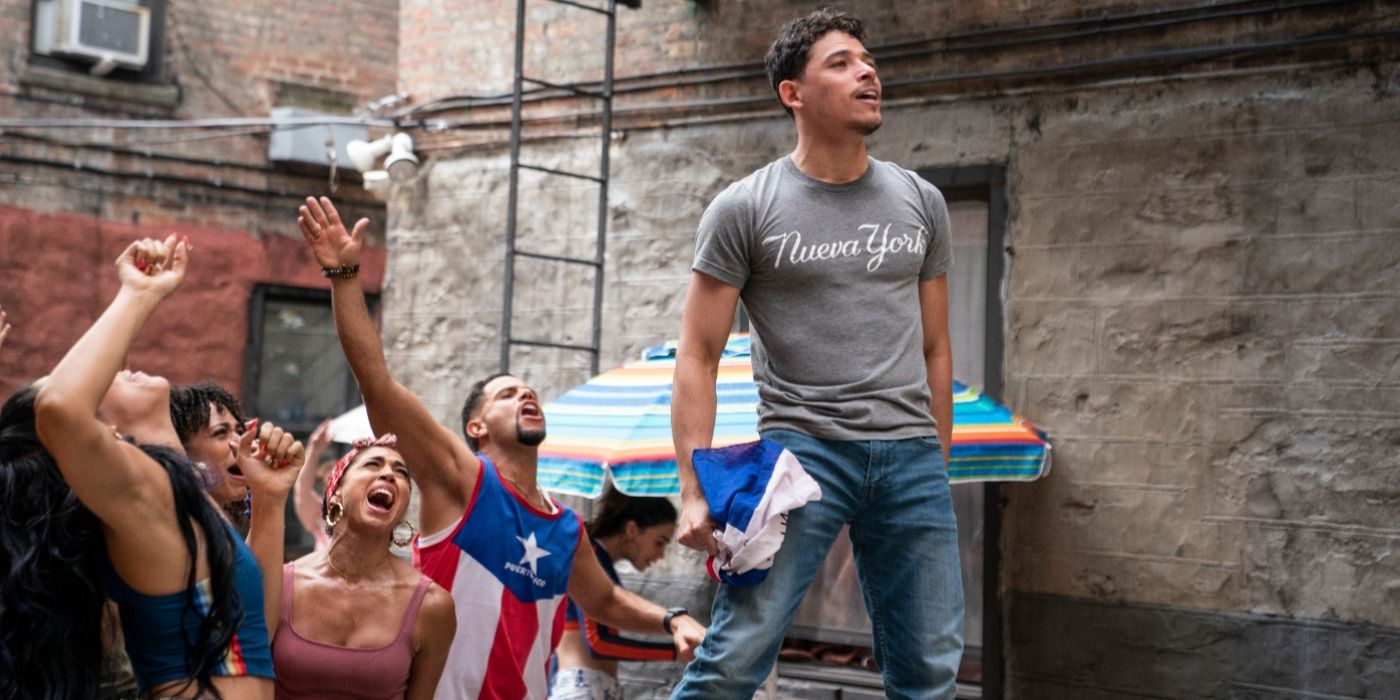Last weekend the all-around fantastic In the Heights finally hit theaters, sending a show-stopping message that movies are on their way back to the big screen after almost a year away. However, there is still a very real pandemic at large in the country, with less than half of citizens fully vaccinated as of this writing. Even the movie’s arresting musical numbers shouldn’t be expected to bear the pressure of getting people to break free of their comfort zones established over the last year and head off to poorly-ventilated, minimal-capacity theaters, where people (possibly not vaccinated) are likely keeping their masks off after snacking and not taking protocols seriously. Additionally, the movie debuted on HBO Max the same day, meaning anyone with a subscription could stay home and watch it with family and friends. Taking all that into account alongside the fact that the industry is in a general state of recovery should make it easy to accept if In the Heights – or any summer movie, for that matter – doesn’t break the box office.
And yet, words like “disappointing,” “fizzle” and “lackluster” littered headlines in major publications like CNN and The Hollywood Reporter, doom-signaling the movie’s box office results within the first 24 hours of its release as if none of those factors crossed anyone’s mind. It grossed over $11 million its first weekend, falling about $500,000 short of claiming the top spot from A Quiet Place Part II. The problem with all this hyperbolic, woe-laden analysis isn’t that In the Heights’ weekend total was lower than other recent releases, because it admittedly was. The issue lies in steering all the way into Panic Mode and performing an autopsy on a movie’s failure to meet expectations in a climate where there should be no expectations at all.
Pundits can throw all the numbers they want at the screen like they did before the world screeched to a halt, comparing and contrasting box office totals and adding in factors like “IP awareness,” “star power,” “franchise fatigue,” and “nothing else good was on.” But none of that matters yet. Yes, it’s great Godzilla vs. Kong and A Quiet Place Part II performed well, and it’s equally great that Mortal Kombat and The Conjuring 3 also showed promise with their openings. But to now claim that the encouraging box office receipts of those films (all of which were either sequels or adaptations of popular properties) means that the movie industry has returned to normal, and that any release that doesn’t match those numbers is a dud, is absurd.
When Cruella made about $47 million between theaters and Disney+ purchases its first weekend, a Disney spokesperson (via Deadline) said, “Memorial Day weekend marked the first time consumers have had substantial choice in movie viewing since the onset of the pandemic.” And they were right. As of just over a week ago, audiences have lots to choose from in theaters for the first time in a year, signaling that business is on the upswing. So why then are we already putting box office performances under a microscope a week later? There is simply not enough data out there to suggest movies like In the Heights should be labeled as “disappointing,” when the mere fact of being able to open in theaters to the tune of $11 million is heartening because it means people are indeed ready to return to the big screen. But what happens next week if F9 doesn’t make close to $100 million opening weekend? Marvel’s Black Widow arrives two weeks later both in theaters and on Disney+, so again, what happens if it doesn’t open as well as Marvel’s other hits? Will headlines read “Fast franchise stalls,” or “Black Widow lacks bite at box office”?
As summer goes on and restrictions are likely rolled back, more and more people will be fully vaccinated and feeling comfortable to brave restaurants and theaters again, and yes, we should expect to see box office totals start to regain their footing. But right now, it feels like we’re too eager to believe everything is getting back to normal at warp speed, and thus are looking at the box office as if it’s not still just beginning to build momentum. Such a response like what we saw last weekend comes off as insensitive and out-of-touch, puts pressure on movies despite everything still going on, and painfully reaffirms a culture of analysis that perpetuates box office gross as the most important measure of success – analysis that the last year of theater closures proved is entirely meaningless.
Right before opening weekend, Heights director Jon M. Chu took to Twitter to post footage he shot after sneaking into a packed showing of the movie. The crowd was dancing and cheering to “96,000,” one of the movie’s strongest numbers, and having an absolute blast. You would’ve thought they just watched Nick Fury step out of a wormhole and say, “An eye for an eye, you dirty motherf***ers.” This likely marked a lot of people’s return to theaters after a year, and seeing them react in such a jubilant way that a home viewing experience can never replicate is – I say in italics – huuuuge. People are ready to go back to the movies, but not in the droves we would normally expect just yet. So, we should ditch the expectations altogether and just be excited people are going back to theaters at all, instead of lamenting why In the Heights didn’t make as much as the musical where Hugh Jackman wears a top hat. As we can see in Chu’s video, the movie is connecting with audiences in a major way, and that’s all that matters. More than box office receipts, the crowd’s reaction proves there’s nothing to worry about: the theatrical experience is here to stay.



